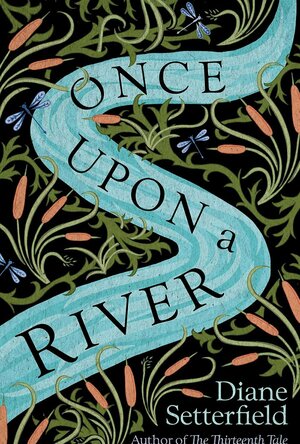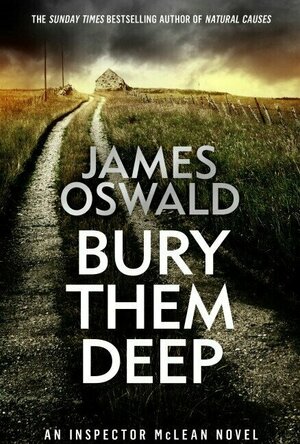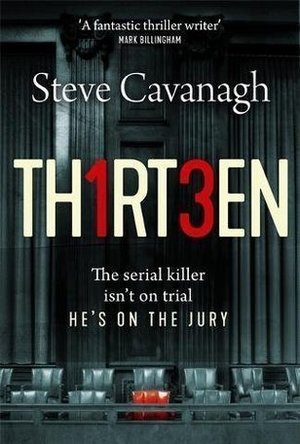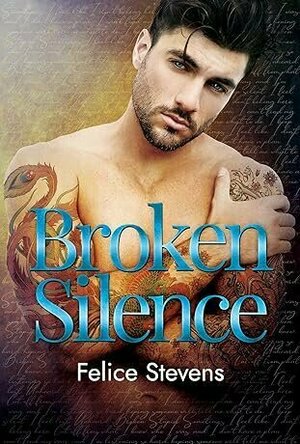
Broken Silence (Rock Bottom #1)
Book
Justin Molina has secrets. He’s served his time but remains a prisoner of his past, unable to...
Contemporary MM Romance
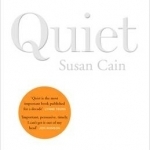
Quiet: The Power of Introverts in a World That Can't Stop Talking
Book
Quiet by Susan Cain will change how you think about introverts forever A Sunday Times and New York...

The Sweeney Sisters
Book
"This is a big-hearted belly-laugh of a book, told with wit and poignancy. Family secrets, laughter...

Forbidden Match (Perfect Match Agency #6)
Book
The Perfect Match Agency’s company policy is No dating in the workplace! Looks like Renn and...
Omegaverse MM Romance
Hazel (1853 KP) rated The Paris Secret in Books
Dec 17, 2018
The Paris Secret</i> is Karen Swan’s latest contemporary novel of light mystery, surprises and a hint of romance. A rich family man in France has recently learnt of an abandoned apartment belonging to his long-deceased father. What was even more astonishing was the discovery that the place is stacked top to bottom with famous artwork. Flora Sykes, a British Fine Art Agent, is hired to tell the family more about their newfound possessions.
Although Flora comes from a wealthy family, the opulence of the Vermeil family is overwhelming. Despite the initial welcoming, Flora is disconcerted by the behaviour of their rotten daughter, Natascha, and terse yet handsome son, Xavier. Feeling like she is already unwanted, things get worse after her research exposes a devastating secret about the family’s history. Fearing she is to blame for the Vermeil’s downfall, Flora tries to focus on her work, but her confusing feelings towards Xavier are driving her to distraction.
For art lovers, <i>The Paris Secret</i> will hold great appeal. A vast amount of research has gone into the novel to be able to include such detail about famous painters, artwork, auctions and much more. While the story primarily focuses on said topic, there is also the added touch of romance developing in the latter stages as well as a continuous theme of brotherly sisterly bonds.
A real-life scenario in which a Paris apartment was discovered after being shut up since the Second World War inspired Karen Swan to write this enthralling story. Using this as the bare bones, Swan tried to imagine what the discovery would have been like for the family, how it would alter their futures, and most importantly what it would change about the knowledge of their history. What emerges is a gripping book that emphasizes the importance of family, prejudices and the continued effects of past war.
In a way,<i> The Paris Secret</i> can be viewed as a piece of Chick Lit – it is about a twenty something woman who has never been in love. On the other hand, is there enough romance for it to sit comfortable under this heading? Perhaps not, but that helps to improve the overall storyline. The inevitable romance scenes do not detract from the Art History plot, thankfully limiting the amount of pages some readers may find uncomfortable.
In all honesty you will need to have a little interest, or enough knowledge of the fine art world to get the most out of this book. Although a leisurely read, <i>The Paris Secret</i> contains many highbrow topics and less of the unpretentious lovey-dovey stuff. Flora is an easy character to like and the narrative flows exceptionally well. Karen Swan is a worthy author to keep in mind when browsing for something to read.
Ivana A. | Diary of Difference (1171 KP) rated Once Upon a River in Books
Oct 2, 2020
Once Upon a River by Diane Setterfield is a story that had the perfect plot potential to be amazing, but it didn’t deliver at all. As a huge fan of storytelling, this was a big disappointment for me, the biggest one so far in 2019.
‘’There are stories that may be told aloud, and stories that must be told in whispers, and there are stories that are never told at all.’’
The story happens in a small city, on the river Thames. It features the pub Swan, where people gather every night, and everyone knows each other, and they all tell stories all night and enjoy their company.
If you have ever been to England, it is so easy to imagine the setting of a pub, warm place, crowded with people laughing and talking loudly, glasses clinking and people singing random songs in the background. A lot of positive noise and enchanting atmosphere.
And one night, the usual setting is being disturbed, when a man enters the pub with a little girl in his arms, and then passes away. The girl appears to not be breathing for a while, and everyone thinks she is dead, but suddenly, she is breathing again. And the man that is with her is not her father.
As the town is used to, they make stories of it. How it happened, who is the father, does she have a family, why was she drowning in the river… The plot entangles when the family is to be found of the little girl, but a few people claim she is their relative.
‘’Something happens and then something else happens and then all sorts of other things happen, expected and unexpected, unusual and ordinary.’’
The storytelling and the writing of the author was beautiful. At times. The beginning was a paradise for book lovers. The best first chapters I read this year. But after the plot opening, everything started going downhill.
It felt like being on this roller coaster, excited, going slowly upwards, slowly reaching the top, ready to fall so fast, ready for an adventure, only for them to tell you that there is a fault, and you have to get back and exit the ride without even making the adventure out of it.
I wanted to love it. The writing at parts was great, and I am including a lot of quotes throughout the review, because I loved those parts. But the chapters and characters were too many, and things were happening too fast and without a purpose, that it was hard for me to pick up the pace. I had to leave the book and pick it up again, and it took me three months to complete it. A hard book to swallow and process.
Hazel (1853 KP) rated But Then I Came Back in Books
Dec 14, 2018
Estelle Laure’s second Young Adult novel is due for publication with promises of a unique storyline. <i>But Then I Came Back</i> is about life after a near death experience, and the ways it alters your view of the world. Eden was lucky to wake up from a month long coma after being involved in a terrible accident. However, life cannot immediately go back to the way things were. With a mountain of therapy sessions ahead of her to relearn how to swallow and walk, Eden feels her ballet career is over before it even had a chance to start. And, graduating from high school does not seem likely either.
In the hospital, there is another girl in a coma who has not been as lucky as Eden. Not knowing whether she will ever wake up, Eden becomes obsessed with Jasmine, especially as she is certain she saw her in a dream-like state whilst she was unconscious. Eden also becomes fascinated with Jasmine’s only visitor, Joe, and for his sake is desperate to help wake Jasmine up.
Bordering on paranormal, Eden and Joe experiment with ways of reaching Jasmine, wherever she may be. As their relationship blossoms, Jasmine deteriorates, and soon Joe must make a decision: let Jasmine go, or keep trying, knowing she will not be the same person if she wakes.
Eden’s personality will resonate with book lovers as she is forever quoting from literature. On the other hand, her behaviour is initially antagonistic, which makes it hard for the reader to give her any sympathy. As a result, it takes some time to get into the story.
When Eden wakes up, she is obviously confused and unwell, which affects the way she behaves. I did not like her as a person, and therefore was not that interested in the book. It was also difficult to pin point the key theme of the novel. Was the paranormal theme the main concept, or Eden’s recovery and relationship with Joe? Neither of these was explored deeply. There was scope for so much more, especially the prospect of an in between – a limbo between life and death.
<i>But Then I Came Back</i> is a little disappointing; the blurb promises something special, but all we are given is a teen romance, and not a very interesting one. Estelle Laure is a good writer; nevertheless her storyline was underdeveloped.
Hazel (2934 KP) rated Bury Them Deep (Inspector McLean #10) in Books
Feb 16, 2020
DCI Tony McLean is a Detective Chief Inspector and, as such, should not be on the front line of policing however, he just can't help himself particularly when a trusted colleague, Anya Renfrew, goes missing under suspicious circumstances. Is this connected to a massive multi-agency enquiry that is just about to get underway and which is so hush-hush, that most people involved don't know the full story? Was she just unfortunate to be in the wrong place at the wrong time? Or is this connected to numerous missing persons cases that have remained unsolved for many years? When it transpires why Anya was where she was when she disappeared and her address is not where she actually lives, the mystery deepens.
It's clear that Tony is at his happiest when in the thick of things rather than sitting at his desk reading reports and directing operations and this theme is strong throughout the book. Mr Oswald is able to effortlessly portray the enthusiasm and passion Tony has for investigating and solving the apparently unsolvable crimes whilst trying to appease the top brass and having a life outside of the Police. This ability brings Tony to life and makes him believable and "human".
It's not just Tony who is brought to life, this book is littered with excellent characters ... Grumpy Bob, Norman Bates, Gav, Bobby, Professor Harriet Turner, etc., etc., etc. Ex Detective Superintendent Grace Ramsey was a particular favourite of mine who is described as "a slim, middleaged woman in a severe dark suit with a face like licking piss off a nettle" ... that one line caused a laugh-out-loud moment and conjured up an image that has stuck with me and one that captures a few people I know!! I will definitely be using that one in the future 😎
The opening chapter had me hooked and wondering what the heck it would have to do with a crime in the 21st century however, the subtly of how this was woven and developed into the story was excellent and had me thinking that it isn't something that's beyond what is possible in these times unfortunately.
This is an engrossing read and one in which I was completely drawn into and enjoyed immensely from start to finish and, once again, I am thankful to Headline and NetGalley for my copy in return for an honest and unbiased review.
Eddie Flynn is a defence lawyer, good at what he does, he has made a name for himself, whilst annoying the NYPD. When Robert Solomon gets arrested for murder, Flynn gets an invite to be on the defence team. With all the evidence stacked up against Robert, Flynn knows he has a fight in court. But the further Flynn investigates, he quickly comes to realise that it is not a simple case of murder.
From the start, you know that Joshua Kane was a master of his work. Everything he did was planned to the finest detail. He was one of the cleverest serial killers I have read about and I did have an admiration for him.
The story swaps between Flynn and Kane’s story, there is no confusion as Kane is in 3rd POV. This helped the story flow and you learn about the characters in detail. This story is fast paced and the tension builds throughout. I do not read many courtroom dramas but I found this intriguing, even down to the jury selection and after I found out what they have to go through to get selected, I admired Joshua more.
When I am reading thrillers I like to guess where the story was going, but with this story, I was wrong in every case. The story was well plotted and there was a lot of detail to the story. Even if you have not read the others in the series, you do not miss out on any of the stories as this can be read as a stand-alone and for me a good introduction to this author’s work. An intriguing plot and a must for thriller lovers and you will get to find out why thirteen as there are only twelve on the jury.

Hat Monkey - for kids to sing, play and have fun
Book and Education
App
Hat Monkey is a small monkey with a hat who needs our help around the house. Young children will...

